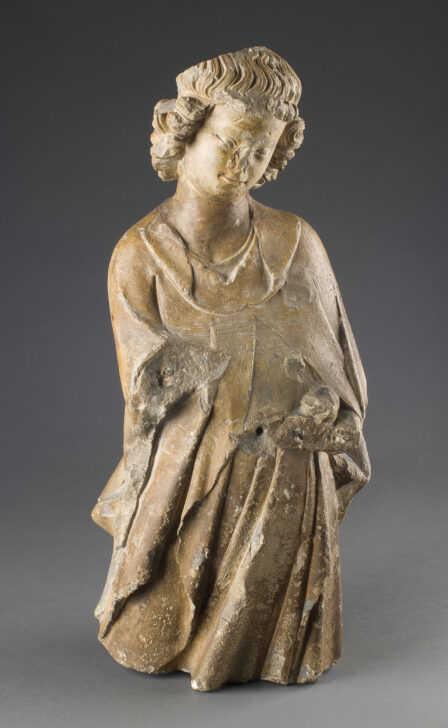Angel
French

Description
March 28, 2009
This graceful but battered figure can be identified as an angel by the two slots in its back, for the attachment of wings. The angel probably belonged to a figural group in a church interior, perched on a column around an altar with other angels or paired with a statue of the Virgin Mary in an Annunciation scene. Sadly, the sculpture has lost its lower legs, forearms, and hands, which held an object such as a trumpet or candle. Although the origins of the work are unknown, the style of the figure indicates that it was produced in the Paris region, a hypothesis confirmed by a chemical analysis of the limestone from which it is carved.
Subject Matter:
This figure can be identified as an angel through the two slots carved in its back that would have held wings. The angel would have appeared alongside other similar sculptures in the interior of a church in the Paris region, where it might have been paired with a figure of the Virgin to form an Annunciation group or perhaps accompanied other angels as part of an ensemble around an altar.
Physical Description:
This sculpture represents an angel bending slightly toward the left with his head tilted downward. Carved slots in his back would have held his wings, and the figure has lost his forearms and hands as well as his legs below the knees.
Usage Rights:
If you are interested in using an image for a publication, please visit https://umma.umich.edu/request-image/ for more information and to fill out the online Image Rights and Reproductions Request Form.